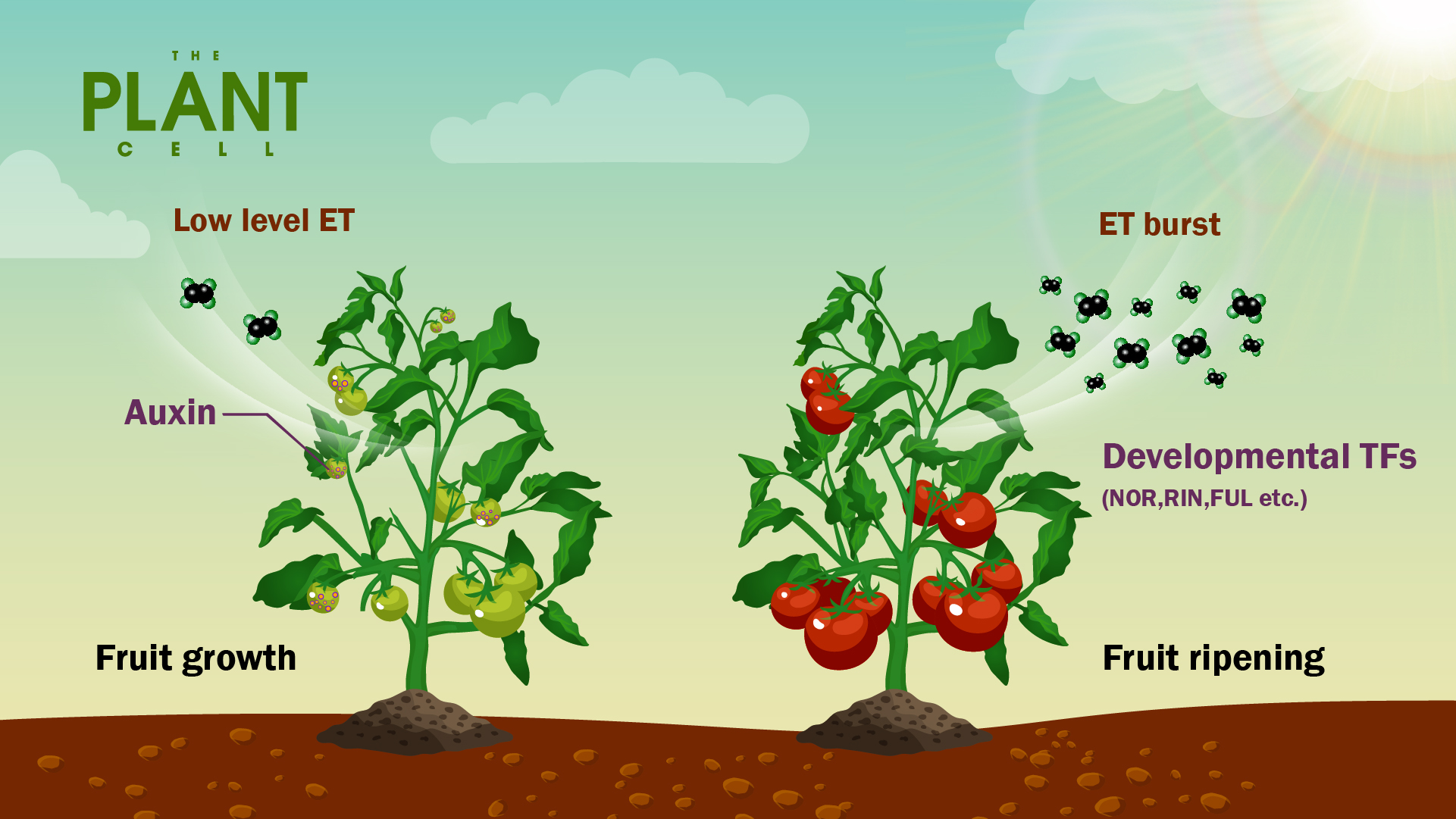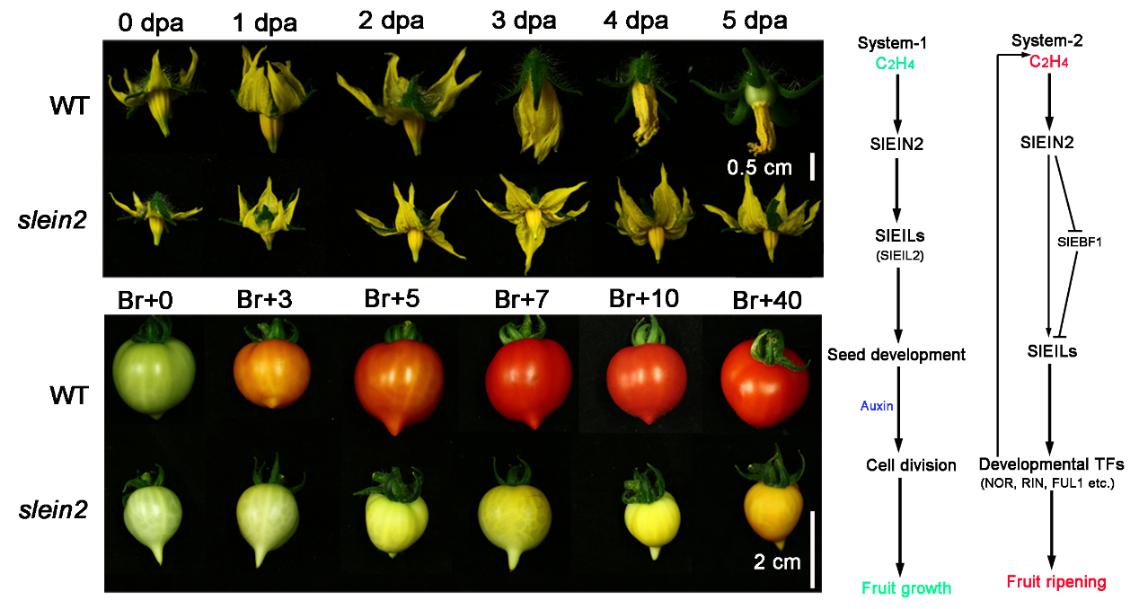Fruit development is an intriguing evolutionary strategy that functions in both seed protection and seed dispersal. Tomato (Solanum lycopersicum) has long been used as a model system to uncover mechanisms underlying fruit growth and ripening. The phytohormone ethylene serves as a central regulator of fruit ripening, but whether and how ethylene regulates tomato fruit growth remains elusive.
In addition, the naturally occurring mutants that initially pointed to the roles of the transcription factors RIPENING INHIBITOR (RIN) and NON-RIPENING (NOR) in fruit maturation show complete ripening cessation, but clustered regularly interspaced short palindromic repeats/CRISPR associated9 (CRISPR/Cas9) generated rin and nor knockout mutants display much milder ripening inhibition. This further makes the relationship between ethylene and the developmental factors NOR and RIN under debate.

Professor Hongwei Guo’s group from the School of Life Sciences at the Southern University of Science and Technology (SUSTech) has recently discovered new roles of ethylene in fruit development and supports a molecular framework of ripening control in which the developmental factors NOR, RIN, and FUL1 act downstream of ethylene signaling.
This work, entitled “A molecular framework of ethylene-mediated fruit growth and ripening processes in tomato,” has been published in The Plant Cell, a high-impact journal in the plant research field.
Professor Guo’s team focused on the molecular mechanisms of ethylene signaling and plant development. In this study, they carried out comprehensive genetic analyses of genome-edited mutants of tomato ETHYLENE INSENSITIVE 2 (SlEIN2), four EIN3-like genes (SlEIL1–4), and three EIN3 BINDING F-box protein genes (SlEBF1–3). Both slein2-1 and the high-order sleil mutant (sleil1sleil2 sleil3/SlEIL3 sleil4) showed reduced fruit size, mainly due to decreased auxin biosynthesis.
During fruit maturation, slein2 mutants displayed the complete cessation of ripening, which was partially rescued by slebf1 but not slebf2 or slebf3. They also discovered that ethylene directly activates the expression of the developmental genes NOR, RIN, and FRUITFULL1 (FUL1) via SlEIL proteins.
Overexpressing these genes partially rescued the ripening defects of slein2-1. Finally, the researchers showed that the variation in ethylene signal intensity conferred by system-2 ethylene was closely associated with the timing of ripening initiation and the achievement of full ripeness, which may explain why climacteric fruits such as tomato usually exhibit an ethylene burst during fruit ripening.

Figure 1. The left images show the phenotype of the slein2 mutant. The right schematic diagrams show the proposed working model for ethylene-mediated fruit growth and fruit ripening control.
Dr. Wei Huang, a senior research fellow from Prof. Guo’s group at SUSTech, is the first author of this paper. Prof. Hongwei Guo is the corresponding author. Other contributing members of the team included Zhina Xiao, Yuping Qiu, Jie Yang, Xin Mao, Yan Yang, and Yichuan Wang. This work was also supported by Prof. Zhengguo Li and Dr. Nan Hu at Chongqing University.
This work was funded by the National Natural Science Foundation of China (NSFC), the Shenzhen Sci-Tech Fund, and the Key Laboratory of Molecular Design for Plant Cell Factory of Guangdong Higher Education Institutes.
Paper link: https://academic.oup.com/plcell/advance-article/doi/10.1093/plcell/koac146/6590653?login=true
To read all stories about SUSTech science, subscribe to the monthly SUSTech Newsletter.
Proofread ByAdrian Cremin, Yingying XIA
Photo By